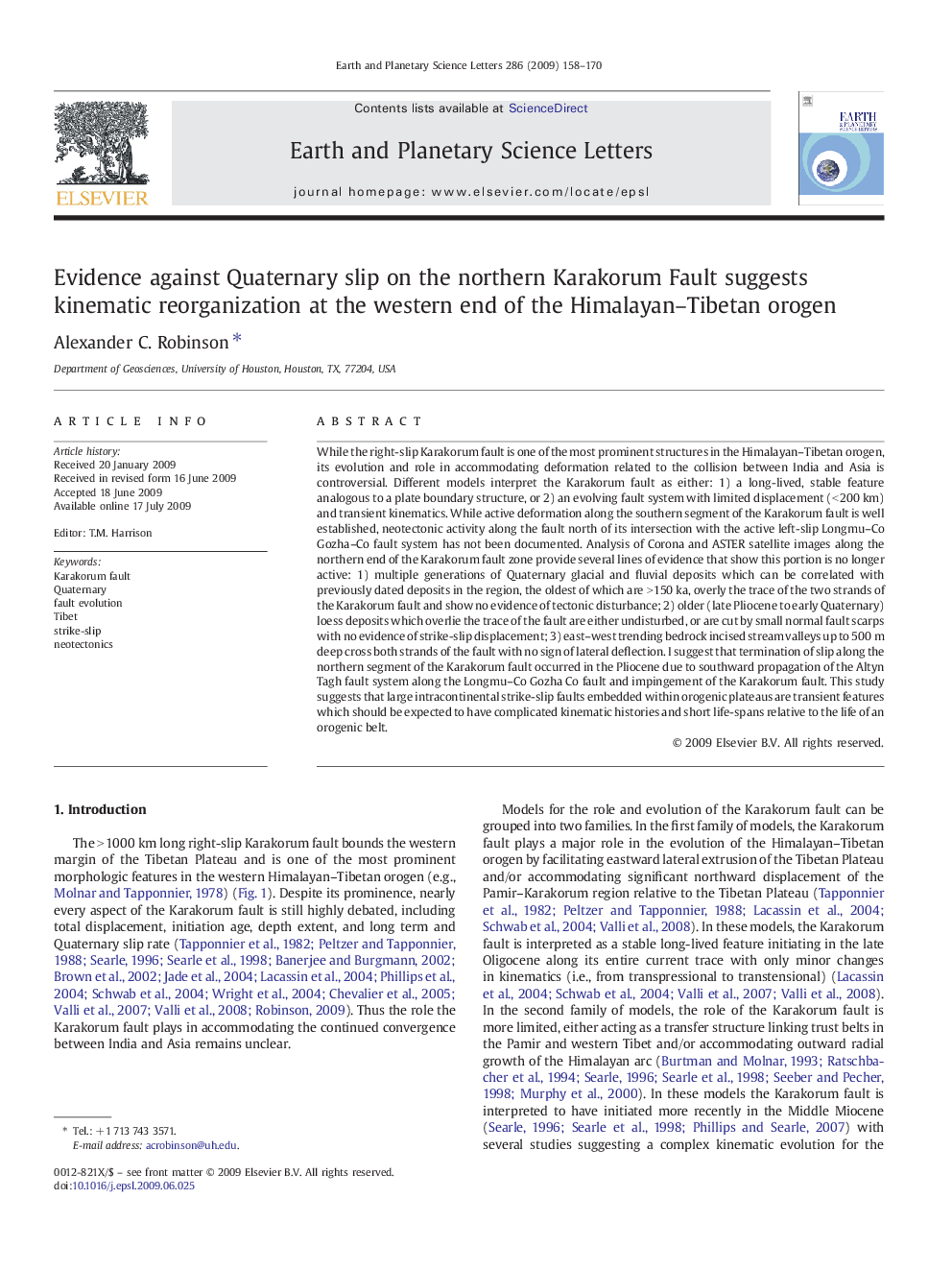| کد مقاله | کد نشریه | سال انتشار | مقاله انگلیسی | نسخه تمام متن |
|---|---|---|---|---|
| 4678877 | 1634867 | 2009 | 13 صفحه PDF | دانلود رایگان |

While the right-slip Karakorum fault is one of the most prominent structures in the Himalayan–Tibetan orogen, its evolution and role in accommodating deformation related to the collision between India and Asia is controversial. Different models interpret the Karakorum fault as either: 1) a long-lived, stable feature analogous to a plate boundary structure, or 2) an evolving fault system with limited displacement (< 200 km) and transient kinematics. While active deformation along the southern segment of the Karakorum fault is well established, neotectonic activity along the fault north of its intersection with the active left-slip Longmu–Co Gozha–Co fault system has not been documented. Analysis of Corona and ASTER satellite images along the northern end of the Karakorum fault zone provide several lines of evidence that show this portion is no longer active: 1) multiple generations of Quaternary glacial and fluvial deposits which can be correlated with previously dated deposits in the region, the oldest of which are > 150 ka, overly the trace of the two strands of the Karakorum fault and show no evidence of tectonic disturbance; 2) older (late Pliocene to early Quaternary) loess deposits which overlie the trace of the fault are either undisturbed, or are cut by small normal fault scarps with no evidence of strike-slip displacement; 3) east–west trending bedrock incised stream valleys up to 500 m deep cross both strands of the fault with no sign of lateral deflection. I suggest that termination of slip along the northern segment of the Karakorum fault occurred in the Pliocene due to southward propagation of the Altyn Tagh fault system along the Longmu–Co Gozha Co fault and impingement of the Karakorum fault. This study suggests that large intracontinental strike-slip faults embedded within orogenic plateaus are transient features which should be expected to have complicated kinematic histories and short life-spans relative to the life of an orogenic belt.
Journal: Earth and Planetary Science Letters - Volume 286, Issues 1–2, 30 August 2009, Pages 158–170